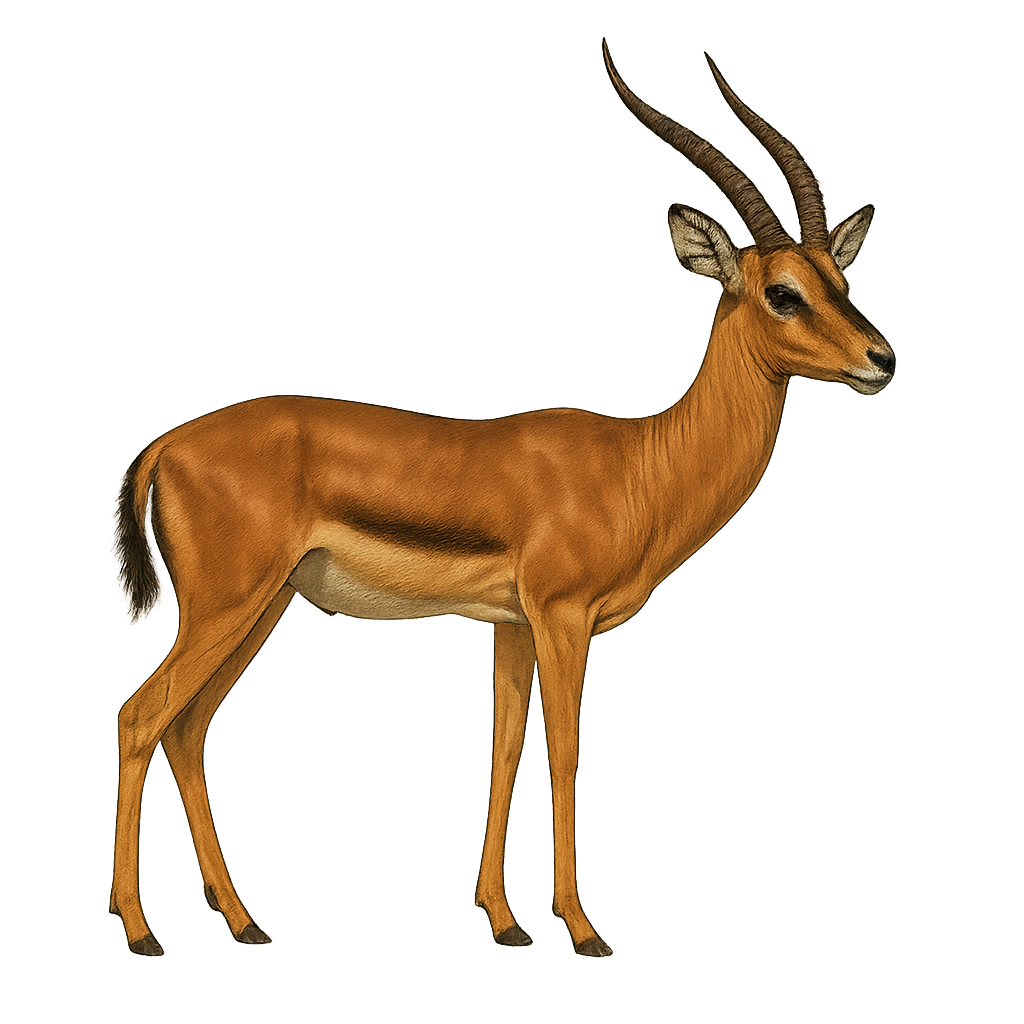Your wildlife photography guide.
Explore the bright's gazelle in detail, study its behavior, prepare your shots.
Where to observe and photograph the bright's gazelle in the wild
Learn where and when to spot the bright's gazelle in the wild, how to identify the species based on distinctive features, and what natural environments it inhabits. The WildlifePhotographer app offers tailored photography tips that reflect the bright's gazelle’s behavior, helping you capture better wildlife images. Explore the full species profile for key information including description, habitat, active periods, and approach techniques.
Bright’s Gazelle
Scientific name: Nanger notatus

IUCN Status: Least Concern
Family: BOVIDAE
Group: Mammals
Sensitivity to human approach: Suspicious
Minimum approach distance: 30 m
Rut period: March to April
Gestation: 198-210 jours
Births: September to October
Habitat:
Dry savannas and thorny bushes
Activity period :
Primarily active during the day, with peak activity in the morning and late afternoon.
Identification and description:
The Bright's Gazelle is an elegant, medium-sized antelope, recognizable for its slender proportions and long, thin legs. It stands about 75 cm at the withers and weighs between 30 and 40 kg. Its coat is generally light beige, with darker markings on the flanks and a distinctive black stripe running along its lateral line. Adult males have fine, curved horns, while females generally lack them. The Bright's Gazelle primarily inhabits the savannas and steppes of East Africa, particularly in Ethiopia and Kenya. It is herbivorous, feeding mainly on grasses, leaves, and plants. Like all gazelles, it is fast and agile, capable of running at speeds of up to 80 km/h to escape predators. Although the Bright's Gazelle is not currently endangered, it faces threats related to habitat loss, hunting, and competition with livestock for food resources.
Recommended lens:
400 mm – adjust based on distance, desired framing (portrait or habitat), and approach conditions.
Photography tips:
Approach slowly and quietly, using a telephoto lens to avoid disturbing the Bright’s gazelle—an agile and alert species that can quickly flee at the slightest sign of danger.
Photograph early in the morning or late in the afternoon, when the soft light enhances the warm tones of its coat and creates a natural atmosphere across the open grasslands and savannahs it inhabits.
Look for it in small to medium-sized herds, often grazing or moving gracefully through its habitat. Use these moments to capture expressive group scenes or dynamic movement.
Be patient, respectful, and quiet. Bright’s gazelle is highly sensitive to human presence. Wait for it to behave naturally without forcing interaction or causing stress.
Bright’s Gazelle is classified as a Vulnerable species by the IUCN. Habitat degradation, livestock competition, and human pressure are major threats. Ethical and respectful wildlife photography is essential to help preserve this species and its fragile habitat.
The WildlifePhotographer App is coming soon!
Be the first to explore the best nature spots, track rutting seasons, log your observations, and observe more wildlife.
Already 1 432 wildlife lovers subscribed worldwide

